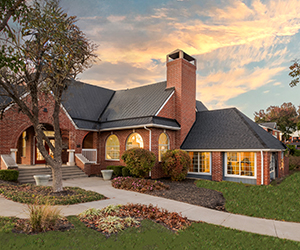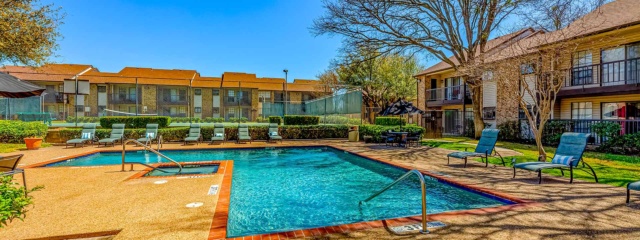Updated 8.2.25
What is Fractional Ownership Real Estate?
There are numerous reasons for investing in commercial real estate, including recurring cash flow streams, growth in property value through appreciation, and tax savings.
Almost all income-producing real estate provide these benefits. However, locating and acquiring high-quality real estate investments directly can be time consuming and expensive, with the best properties oftentimes out of reach.
That is why many sophisticated investors today are bypassing the older model of direct ownership and investing in fractional interest real estate instead. But just what is fractional interest real estate?
Fractional interest is an ownership interest in a percentage of a given asset.
In real estate investing, fractional interest ownership occurs when individual investors act as a group to purchase shares of commercial real estate such as multifamily apartments, industrial, warehouse, office and shopping center properties.
Benefits of Fractional Interest Real Estate Investing
Traditionally, real estate investors have focused on owning 100% of a single property. This strategy may be useful for smaller, potentially riskier “mom-and-pop” types of investments but is not practical for larger properties. It is the bigger is (potentially) better concept.
Until recently, owning high-quality property leased to regional and national credit tenants was simply out of the reach of most investors due to the large capital requirements and expertise required.
Fractional Ownership Real Estate Investing enables those with different investment strategies to own the same commercial real estate that may not otherwise be unattainable for the average investor.
Today, a growing number of commercial real estate investors are realizing the benefits that fractional interest real estate investments have to offer:

Lower Barrier to Entry
The capital required to invest in a fractional interest of real estate is much less than purchasing an entire property. In addition to requiring less funds, the transaction costs of a fractional investment are much lower, without the need to conduct property due diligence or obtaining financing. These costs are shared with all the other investors.
Turnkey Pre-Packaged Investments
Institutional-grade real estate used for fractional investing is pre-vetted by the Sponsor or Trustee, with financing opportunities either in place or committed to with lenders. In most cases, property is pre-leased to a regional or national credit tenant on a net lease, which reduces investment risk and allows for a more predictable return of investment. In the case of multifamily or student housing asset classes, the sponsor has completed due diligence to ascertain the economic metrics are aligned with the sub-market and how to grow the value of the asset during the hold period.
Diversify Investment Portfolios
Investing in fractional interest real estate makes it much easier to diversify investment portfolios and mitigate risk for the investor. Investors wishing to add income-producing commercial real estate to their portfolios have the option of placing capital in multiple investments, creating a more systematic diversification of capital compared to owning an entire property on their own.
Options for Investing in Fractional Interest Real Estate
The two most common options for investing in fractional interest real estate are with Tenant-In-Common (TIC) ownership and/or by owning a beneficial interest in a Delaware Statutory Trust (DST). See article DST Vs TIC Property Investing
Tenants-In-Common
A tenants-in-common investment is real estate that is directly co-owned with other investors. Unlike a DST, TIC investors must take an active part in making decisions about the property, although daily operations are often delegated to third-party asset and property managers:
- TIC agreements require that major property decisions such as financing or selling require the unanimous agreement of all owners.
- While TIC interests can be bought and sold, one of the biggest risks is that a new co-investor may become uncooperative by not agreeing to a major property improvement or by refusing to sell, even if all other owners agree to do so.
- TICs are generally structured to accept a lower number of investors, making it more difficult to diversify risk and invest in larger, more expensive Class A real estate.
Delaware Statutory Trust (DST)
NAS Investment Solutions specializes in DST structured properties. A DST is a legal entity that directly owns the real property, while investors own a fractional or “beneficial interest” in the DST:
- Because DSTs have no limit to the number of investors, NAS Investment Solutions’ DST properties allow investors to own part of a larger, investment-grade property with a minimal amount of capital.
- DSTs are completely passive investments, with all major property decisions made by the trustee of the DST.
- Beneficial interest structure of a DST shields investors from potential liability because the DST owns the real property, not the investor.
- Individual investors do not have to qualify for financing, because loans are made to the DST directly.
- A variety of properties may be held within the same DST, each with a different debt structure, providing investors with a deeper level of diversification from a single DST investment.
Since 2004, DSTs have been steadily increasing in popularity compared to TICs, in part because of the truly passive, hands-off nature of fractional interest DST real estate investments along with the ease of using a DST on the replacement side of a 1031 tax deferred exchange.
Factors to Consider Before Investing
Although fractional interest real estate investments offer a wide range of benefits, they may not be the best choice for every real estate investor. Some of the key factors to consider before investing in fractional interest real estate include:

Liquidity
Because of their relative illiquidity, fractional investments are best suited for real estate investors with a targeted holding period of at least 7 – 10 years.
Risk-Adjusted Returns
Fractional real estate ownership allows an investor to own part of a property that they otherwise may not be able to attain on their own.
In exchange for the relatively lower risk of owning part of a high-quality property leased to a national or regional credit tenant, in a NNN lease, with predictable cash flows, overall returns may be lower than higher-risk Class B or more speculative investments.
Capital Diversification with Passive DST Fractional Ownership
Fractional ownership investments, in a NAS Investment Solutions’ commercial real estate property makes fractional ownership an attractive option for the replacement property in a 1031 exchange. Fractional ownership also allows investors to diversify an investment portfolio away from more volatile stocks and bonds, and the potentially higher risk of direct property ownership.
Sponsorship
Fractional interest real estate is a passive investment. Rather than requiring the investor to actively participate in property management and operations, the Sponsor is responsible for identifying and structuring pre-packaged investment opportunities, then overseeing the daily operations and achieving the targeted investment returns. See article: The Importance of a Credible Property Investment Sponsor




